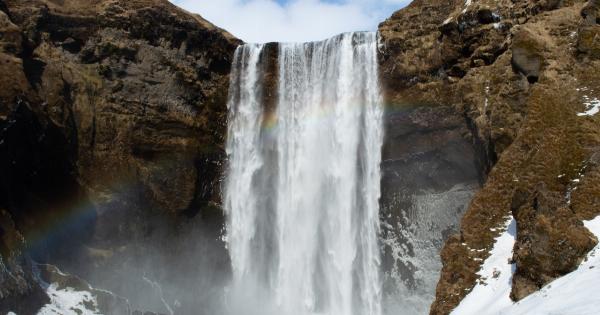In recent years, cold therapy has gained a lot of attention for its numerous health benefits. From reducing inflammation to improving recovery, this ancient practice has become a popular option for those seeking natural ways to combat various diseases.
Cold therapy refers to the use of cold temperatures to treat various health conditions. It can involve applying ice packs, cold compresses, or even whole-body cryotherapy. In this article, we will explore the different ways in which cold therapy can help battle diseases and enhance overall well-being.
The Science Behind Cold Therapy
Cold therapy works by constricting blood vessels and reducing blood flow to specific areas of the body. By doing so, it helps to reduce inflammation and swelling, alleviating pain and promoting healing.
Additionally, exposing the body to cold temperatures can activate various physiological responses that have a positive impact on both physical and mental health.
1. Cold Therapy for Arthritis
Arthritis is a common condition characterized by joint inflammation, stiffness, and pain. Cold therapy can provide significant relief for individuals suffering from arthritis.
Applying cold packs or ice to the affected joints can help reduce swelling, numb pain receptors, and improve mobility. Additionally, cold therapy can minimize the need for nonsteroidal anti-inflammatory drugs (NSAIDs), which can have various side effects when used long-term.
2. Cold Therapy for Muscle Recovery
Experiencing muscle soreness after an intense workout is common, especially for athletes and fitness enthusiasts. Cold therapy is a valuable tool to aid in muscle recovery.
Applying ice or taking ice baths after exercise helps to constrict blood vessels, reduce inflammation, and flush out metabolic waste products that accumulate during physical activity. Cold therapy not only relieves post-workout muscle soreness but also enhances overall recovery time.
3. Cold Therapy for Migraine Relief
Migraines are debilitating headaches that can greatly impact an individual’s quality of life. Cold therapy has been found to be effective in relieving migraines.
Applying cold packs or ice to the head or neck can help constrict blood vessels and reduce the intensity and duration of migraine symptoms. Additionally, cold therapy promotes relaxation and reduces stress, which are known triggers for migraines.
4. Cold Therapy for Skin Conditions
Cold therapy can also be beneficial in managing various skin conditions.
For individuals suffering from eczema, psoriasis, or other inflammatory skin conditions, applying cold compresses or taking cool showers can soothe itching, reduce inflammation, and provide temporary relief. Cold therapy can also have a positive impact on acne by reducing inflammation and shrinking pores.
5. Cold Therapy for Weight Loss Support
While cold therapy alone cannot directly cause weight loss, it can be a valuable support tool in combination with a healthy diet and regular exercise.
Cold temperatures increase the body’s energy expenditure, as it needs to work harder to maintain a stable temperature. This increased expenditure can aid in calorie burning. Additionally, cold therapy can help reduce inflammation, which is often associated with weight gain and obesity.
6. Cold Therapy for Boosting Immunity
Regularly exposing the body to cold temperatures, such as taking cold showers or immersing oneself in ice baths, can potentially boost the immune system. Cold therapy activates brown adipose tissue, which generates heat by burning calories.
This activation results in the production of more immune cells and a potential increase in immunity against infections and diseases.
7. Cold Therapy for Anxiety and Depression
Cold therapy can have a positive impact on mental health by alleviating symptoms of anxiety and depression. Cold showers or immersions stimulate the release of endorphins, which are the body’s natural feel-good hormones.
These hormones promote feelings of well-being and can help counteract the negative emotions associated with anxiety and depression.
8. Cold Therapy for Sleep Improvement
Many people struggle with sleep disorders or have difficulty falling asleep. Cold therapy can aid in improving sleep quality.
Taking a cold shower or using cold packs before bed can help to reduce core body temperature, which naturally signals the body that it is time to sleep. Additionally, cold therapy promotes relaxation and relieves muscle tension, making it easier to drift off into a deep and restful slumber.
9. Cold Therapy for Cardiovascular Health
Cold therapy has been linked to various cardiovascular benefits. Exposure to cold temperatures causes blood vessels to constrict, improving circulation and blood flow.
This constriction can help reduce blood pressure levels and decrease the risk of heart-related diseases. Cold therapy can also stimulate the production of nitric oxide, a molecule that dilates blood vessels, promoting overall cardiovascular health.
10. Cold Therapy for Headache Relief
For individuals experiencing tension headaches or migraines, cold therapy can provide effective relief.
Applying cold packs or ice to the forehead or temples can help numb pain receptors, reduce inflammation, and alleviate tension, leading to headache relief. Cold therapy can be a natural, drug-free alternative to pain medication.
Cold Therapy: An Effective Natural Treatment
From arthritis and muscle recovery to migraines and mental health, cold therapy offers a wide range of benefits for battling diseases and promoting overall well-being.
Whether it’s through localized cold packs or whole-body cryotherapy sessions, incorporating cold therapy into your wellness routine can be a beneficial addition to your health and disease-prevention journey.




























